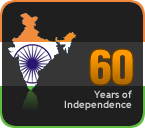 |
| The luscious fruit! |
All
of us have tasted and enjoyed the sweet delicious LITCHI fruits at one time or
another. Those who have never tasted that fruit can’t imagine what they have
missed. Those who have enjoyed that taste can never forget it. The pleasure of
eating a freshly-plucked Litchi and sucking the juice out of it is simply
heavenly -- more so if it is from one’s own front garden. I had the joy of this
pleasure just two months back, at my daughter’s place, in north Bengal.
 |
| The fruit laden tree |
The
litchi tree stands majestically in the front garden, way back from all the
flower beds, and holds sway over all it surveys. Just three-four feet up from
the ground, it has branched off all round resembling an open umbrella, calling on
children to climb on it and play hide and seek among its branches. With no
child of tree-climbing age in the house, the tree stands alone housing various
kinds of birds and insects.
This
tree held a kind of fascination for me, with its fruits hanging so low that one
could pluck them without an effort. I really loved watching it from the veranda
while having my first cup of tea in the mornings. I am not ashamed to say that
I used to get the urge to reach out and sit on the lowest branch – just three
feet above the ground. It always
reminded me of my schooldays in Lakshmi Nivas, my childhood home in Thiruvananthapuram,
where we had all kind of trees and various plants. Among these, I had my own
tree, with very low branches; one of these was my usual place whenever I wanted
to be on my own, far away from everyone else.
 |
| The tree after the fruits were gone |
There
are many types of trees in Gowri’s garden.
The VILVAM tree is the oldest one. The trunk of this tree is so big no
two human arms could hold it – it needs at least two pairs of arms to grasp it.
The Vilvam tree has special religious significance; it is used in Siva temples
for archanai. Its leaves – it is a compound leaf with three leaves in one stem
– are said to represent the three eyes of Lord Siva.
Then
there are are palm trees, peepul trees and a large rain tree. Two of the palm
trees have money plants creeping over their trunks, with leaves as big as elephants
ears. Tall the palm trees may be, but because of this, they look dwarfed when compared to other trees.
In
addition, there are various fruit and flowering trees – such as lemon, starfruit,
guava, a small mango tree, with a single fruit dangling among its branches, and
an ARAINELLIKAI one. The last one belongs to the Gooseberry family, the fruits
smaller in size with a sweet tangy taste.
 |
| The fruit laden branches |
Among
all these trees the Litchi tree was the one that really fascinated me,
especially as I watched the flowers turn to fruit. The pity was I could not
reach out and pluck an unripe litchi and eat it as I might have done with a
green mango. I had to wait for Nature to ripen it.
 |
| Gathering the harvest |
When
these fruits started changing colour from a coppery greenish tinge to a full
red coppery shade, this tree started attracting monkeys in the daytime and bats
at nights. The skin and the seeds strewn on the ground all round the tree were proof
to this Two boys were employed just to drive away the monkeys from the tree but
I observed these boys were never seen when the monkeys appeared. Were the boys neglecting their job or were
the monkeys too clever for them? I don’t know.
In
spite of these monkeys and bats, when the time came to harvest the ripe Litchi
there was plenty, enough for the family, enough for the domestic servants and
plenty more for the neighbours.















